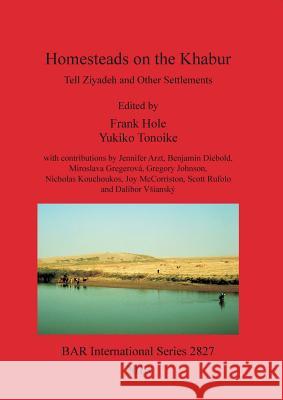Homesteads on the Khabur: Tell Ziyadeh and Other Settlements » książka
Homesteads on the Khabur: Tell Ziyadeh and Other Settlements
ISBN-13: 9781407314624 / Angielski / Miękka / 2016 / 536 str.
In 1994-1997, the Yale University Khabur Basin Project excavated Tell Ziyadeh on the Middle Khabur River of Northeastern Syria. This monograph describes two pioneering settlements: fifth millennium BC Ubaid and early third millennium. It discusses the research programme and strategies; reviews the modern and palaeoenvironments; and provides separate chapters describing the various excavation areas, as well as the ceramic, lithic, faunal and botanical remains found in them. Two chapters describe small-scale excavations at Mashnaqa and Kuran, sites with occupation histories paralleling Ziyadeh. The monograph concludes with a discussion of the immigration by fifth-millennium Ubaid settlers into a virgin landscape in the Khabur, and the gradual transition into a widespread Late Chalcolithic tradition. It provides a reconstruction of the realities of life in these small homesteads, which comprised a society of closely interacting settlements and remained viable for hundreds of years before moving elsewhere, as simultaneously as they had initially arrived.With contributions by Jennifer Arzt, Benjamin Diebold, Miroslava GregerovA, Gregory Johnson, Nicholas Kouchoukos, Joy McCorriston, Scott Rufolo and Dalibor VSianskY
In 1994-1997, the Yale University Khabur Basin Project excavated Tell Ziyadeh on the Middle Khabur River of Northeastern Syria. This monograph describes two pioneering settlements: fifth millennium BC Ubaid and early third millennium. It discusses the research programme and strategies; reviews the modern and palaeoenvironments; and provides separate chapters describing the various excavation areas, as well as the ceramic, lithic, faunal and botanical remains found in them. Two chapters describe small-scale excavations at Mashnaqa and Kuran, sites with occupation histories paralleling Ziyadeh. The monograph concludes with a discussion of the immigration by fifth-millennium Ubaid settlers into a virgin landscape in the Khabur, and the gradual transition into a widespread Late Chalcolithic tradition. It provides a reconstruction of the realities of life in these small homesteads, which comprised a society of closely interacting settlements and remained viable for hundreds of years before moving elsewhere, as simultaneously as they had initially arrived.With contributions by Jennifer Arzt, Benjamin Diebold, Miroslava Gregerová, Gregory Johnson, Nicholas Kouchoukos, Joy McCorriston, Scott Rufolo and Dalibor Všianský











